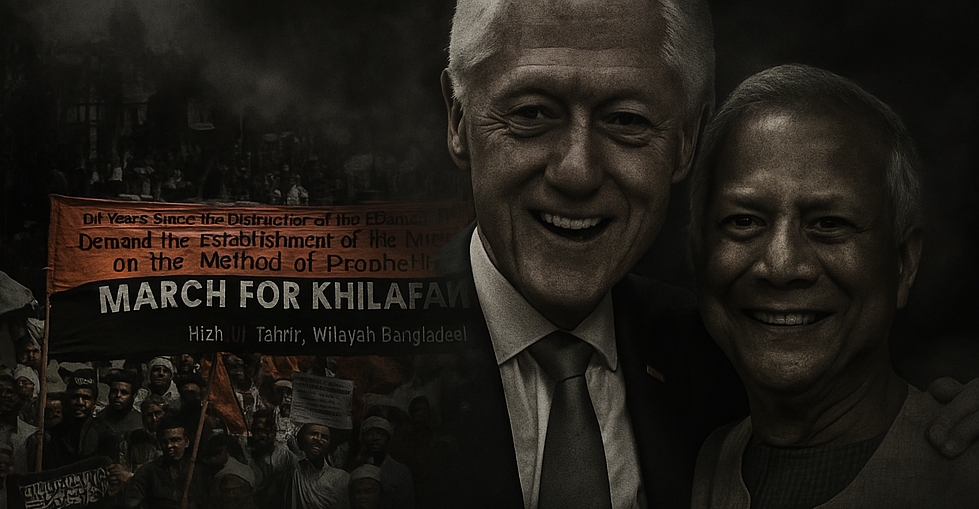
On August 5, 2024, the government of former Prime Minister Sheikh Hasina, leader of the purported progressive Awami League, was overthrown in a movement publicly framed as a student-led uprising.
However, evidence suggests that this event bore the hallmarks of a U.S.-backed color revolution, strategically supported by Western imperialist interests. While portrayed as a grassroots democratic movement, it was largely infiltrated by far-right and Islamist factions, including groups that had actively opposed Bangladesh’s independence in 1971.
Beyond historical collaborators, the uprising also involved Islamist factions advocating for the establishment of an Islamist Caliphate, many of which have documented links to transnational jihadist networks, including militant groups in Syria, the Taliban and other extremist organizations.
The involvement of such actors raises serious concerns about the broader geopolitical interests at play and the long-term consequences of this political shift. Though framed as a pro-democracy movement, the nature of its leadership and ideological underpinnings suggests a far more complex reality shaped by both internal radical elements and foreign intervention.
Roots of the Recent Rise of Extremism in Bangladesh
The recent regime change in Bangladesh is deeply rooted in imperialist intervention, particularly through U.S. funding of anti-government organizations via the National Endowment for Democracy (NED). The Western media played a crucial role in manufacturing consent, promoting the narrative of a “democratic uprising,” while the reality reflected the well-worn tactics of a color revolution. Financial support was funneled into university faculties, ensuring student involvement in the movement, creating the illusion of a grassroots struggle while serving imperialist interests.
However, the central question remains: Was this truly a movement for student rights or were more powerful forces manipulating it for their own ends? The overwhelming evidence points to direct foreign involvement, establishing that this was not an organic rebellion but a strategically engineered destabilization effort.
Among the participants of the movement was Jamaat-e-Islami, the Islamist organization that not only opposed Bangladesh’s independence but was also convicted of war crimes during the Liberation War. Jamaat’s presence in any so-called pro-democracy movement immediately calls its legitimacy into question.
Another key player was the Bangladesh Nationalist Party (BNP), a party with its origins in military dictatorship, known for its embrace of capitalism and its long-standing alignment with imperialist interests. Alongside them were youth organizations loyal to Muhammad Yunus—the Clinton family’s favored neo-liberal figure in Bangladesh—who has long been a tool of Western financial interests.

Certain opportunistic left-wing factions also aligned with the movement, naively or cynically hoping to gain from the chaos.
Following the regime change, the supposed “student leaders” of the movement, hailed by Western-funded human rights organizations as “defenders of democracy,” wasted no time in proposing Muhammad Yunus as the head of an interim government. Given the sources of their funding and their affiliations, this outcome was entirely predictable. What was framed as a student uprising was, in reality, a well-coordinated imperialist project, with local collaborators ensuring that power would be transferred to those most obedient to Western financial and political interests.
How does all this connect to the rise of terrorism and religious extremism in Bangladesh? Since the political shift, there has been a marked resurgence of Islamist activity, with extremist groups operating more freely and assertively than ever. One of the most dangerous among them is Hizb ut-Tahrir—a terrorist organization originally formed in the Jordanian-occupied West Bank as a far-right Islamist reaction against progressive Palestinian liberation movements such as the PLO and PFLP.
Ideologically, Hizb ut-Tahrir is driven by the goal of establishing a global Islamic Caliphate, with a particular focus on destabilizing countries in the Global South. Over the years, it has expanded its operations across multiple regions, including South Asia.
In Bangladesh, its presence was suppressed under the previous government, which had officially banned the group due to its extremist nature and subversive activities, including an attempted military coup. However, following the regime change, Hizb ut-Tahrir has experienced a dangerous revival.
Their propaganda now circulates openly online, their recruitment efforts are increasingly visible, and their messaging has become more aggressive. The group has extended its influence into critical sectors—targeting military personnel, students within universities, members of religious institutions, and other vulnerable segments of society. What was once covert has now become alarmingly overt.
More concerning is their involvement in organizing and inciting violence under the guise of “Tawhidi Janata”—a term that superficially refers to religious masses spontaneously rising in protest. In practice, however, evidence shows that these so-called spontaneous actions—mob attacks, acts of vandalism, and other forms of intimidation —are orchestrated by operatives with clear links to Hizb ut-Tahrir and even openly through social media.
This deliberate mobilization of religious sentiment for political violence is not accidental, but strategic: a tactic to further fragment the country socially and politically, while pushing their fundamentalist agenda into the mainstream.
Their strategy is clear—these extremist actors consistently embed themselves within broader social movements, framing their mobilizations through terms such as “Tawhidi Janata” (Muslim Masses) as a smokescreen though, in practice, these mobilizations are often steered by Hizb ut-Tahrir-linked operatives.
The re-emergence of such a group, previously identified as a threat to national security, underscores the broader consequences of the current political realignment. It has created a vacuum where reactionary forces are now emboldened to operate with impunity, at the expense of Bangladesh’s secular and democratic foundations.
Hizb ut-Tahrir’s de facto leader in Bangladesh, Asif Adnan, has a well-documented history of involvement with global jihadist networks. Arrested by Bangladeshi intelligence in 2014 under the previous government, law enforcement recovered messages from his phone proving his links to al-Nusra Front and al-Qaeda in South Asia. He and his associates were actively preparing to volunteer in Syria for al-Nusra Front, the Syrian branch of al-Qaeda at the time.
Following 2016, this faction later integrated into Hayat Tahrir al-Sham (HTS), the current al-Qaeda-linked militant group in Syria, which rose to prominence after the overthrow of Syrian President Bashar al-Assad under the leadership of Ahmed al-Shaara, an al-Qaeda and former ISIS-affiliated figure.
Despite these serious charges, Asif Adnan was bailed out in 2014 and sent safely to Malaysia, where he remained until the recent political shift in Bangladesh. This outcome is hardly surprising given his family’s political ties—his father served as a Supreme Court judge in 2002 under the BNP-Jamaat regime.
Hizb ut-Tahrir’s operations in Bangladesh extend beyond typical extremist recruitment; they actively incite children into jihadism through religious institutions, online propaganda, and targeted outreach. One of their key figures, Harun Izhar, has openly promoted former ISIS leader Abu Bakr al-Baghdadi and continues to operate within Hizb ut-Tahrir’s media networks. He plays a direct role in radicalizing young students in religious institutions, encouraging them to embrace jihadist ideology.
Beyond direct militant recruitment, Hizb ut-Tahrir also runs ideological and propaganda campaigns aimed at reshaping Bangladesh’s social and political landscape along fundamentalist lines. Their members have launched hate campaigns against “No Beef” restaurants, clearly aligning with broader anti-Hindu sentiment, as cows hold religious significance in Hinduism.
Additionally, their affiliates have publicly threatened to murder “Shahbagis” (a term used to describe progressives and leftists in Bangladesh), declaring that they will not be allowed to exist in Bengal. More extreme elements within the group advocate openly for the abolition of Bangladesh’s secular republican system and the establishment of an Islamic Caliphate, under which they propose imposing Jizya—a tax on non-Muslims living under Islamic rule.
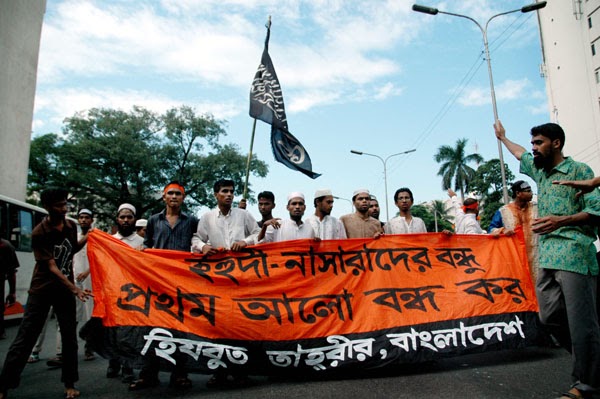
The group’s radical agenda extends to organized movements like the “Anti-Shatim” campaign, which explicitly calls for the elimination of atheists in Bangladesh, and the so-called “Anti-Discrimination Prison Release Movement”, which aims to free convicted terrorists.
This demand is particularly alarming given that the current regime has already released several individuals imprisoned for terrorism under the former government. Among them is Mufti Jashimuddin Rahmani, the leader of the notorious terrorist group Ansarullah Bangla Team, who was convicted for orchestrating the murder of an atheist blogger.

Even more troubling is the series of jailbreaks that have taken place under the current regime, allowing convicted terrorists to escape detention. These incidents have not been isolated; rather, they suggest a disturbing pattern where extremist elements are being given an opportunity to regroup and strengthen their influence in Bangladesh. The unchecked resurgence of Hizb ut-Tahrir and other jihadist organizations is a direct consequence of the political realignment in the country, threatening its secular foundations and long-term stability.
This chain of radicalization and violence does not end with the known names—it continues to evolve, expanding its roots deep into the social and political fabric of Bangladesh. One such figure is Ataur Rahman Bikrompuri, an affiliate of both Hizb ut-Tahrir and the terrorist outfit Ansarullah Bangla Team, the group responsible for the brutal murders of atheist bloggers.
Bikrompuri has become a prominent instigator of religious violence in recent times.
His role in orchestrating a recent attack on a book fair stall underscores the dangerous normalization of such acts, which are often conveniently dismissed by the media as the work of “Tawhidi Janata.” Notably, the media houses that maintain a favorable stance toward the Yunus regime are the first to whitewash or obscure the nature of these assaults.
Bikrompuri is also a central figure in the “Anti-Shatim” movement, a campaign explicitly calling for the killing of atheists. But his reach goes further—he has been linked to attacks on police stations and organized efforts to free individuals convicted of crimes, including sexual violence. That such a figure can operate so freely in today’s Bangladesh speaks volumes about the state of impunity now granted to Islamist forces under the current regime.
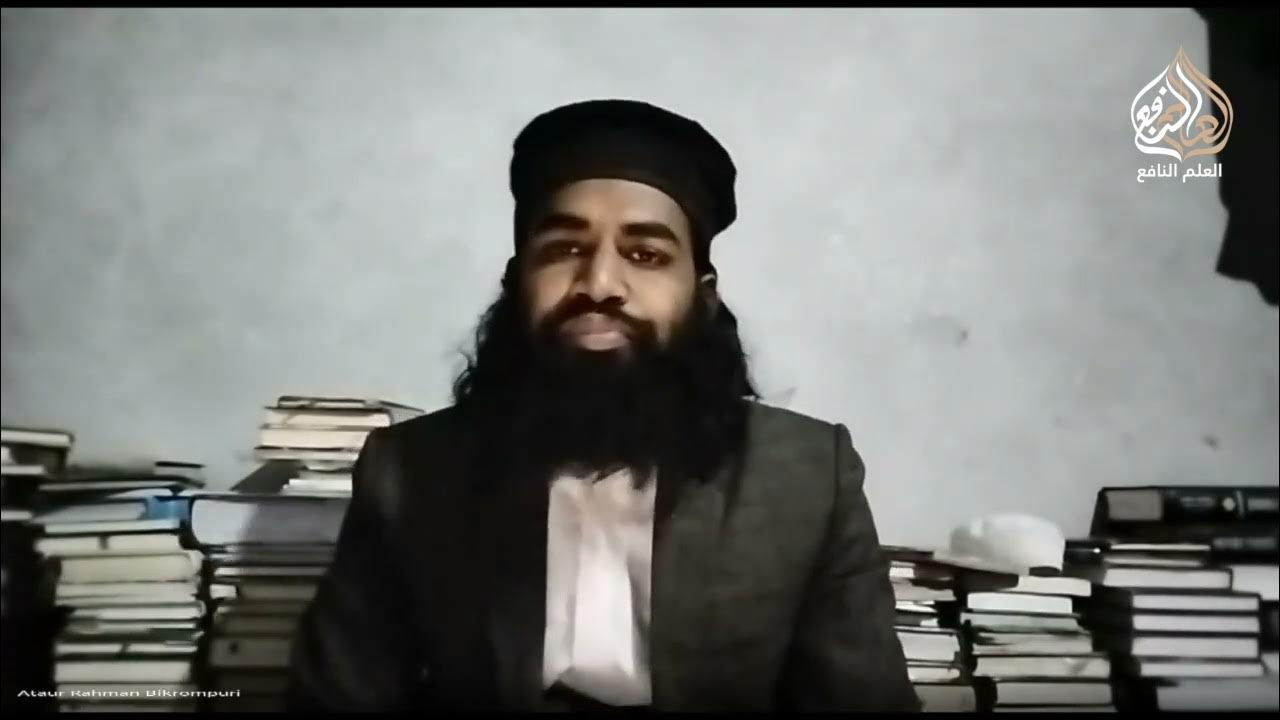
Unsurprisingly, this has been accompanied by an explosion of unrestrained hate speech targeting religious minorities, jingoistic propaganda, and systematic incitement to violence—all of which have gone largely unchecked.
The situation has escalated to such a degree that violent attacks on religious minorities have surged, including the highly controversial arrest of a Hindu missionary organization’s leader—a case shrouded in ambiguity and suggestive of political motivations.
In response to these developments, the regime’s loyalists, propagandists, and even state institutions have taken a predictable approach: deny, downplay, or deflect.
Their goal is clear—bury the growing Islamist problem under layers of PR and official spin. But the reality becomes undeniable when one examines Hizb ut-Tahrir’s own public materials. In multiple instances, the group has openly expressed support for the current regime, even thanking Muhammad Yunus by name in their posters for “facilitating the Islamic movement.”
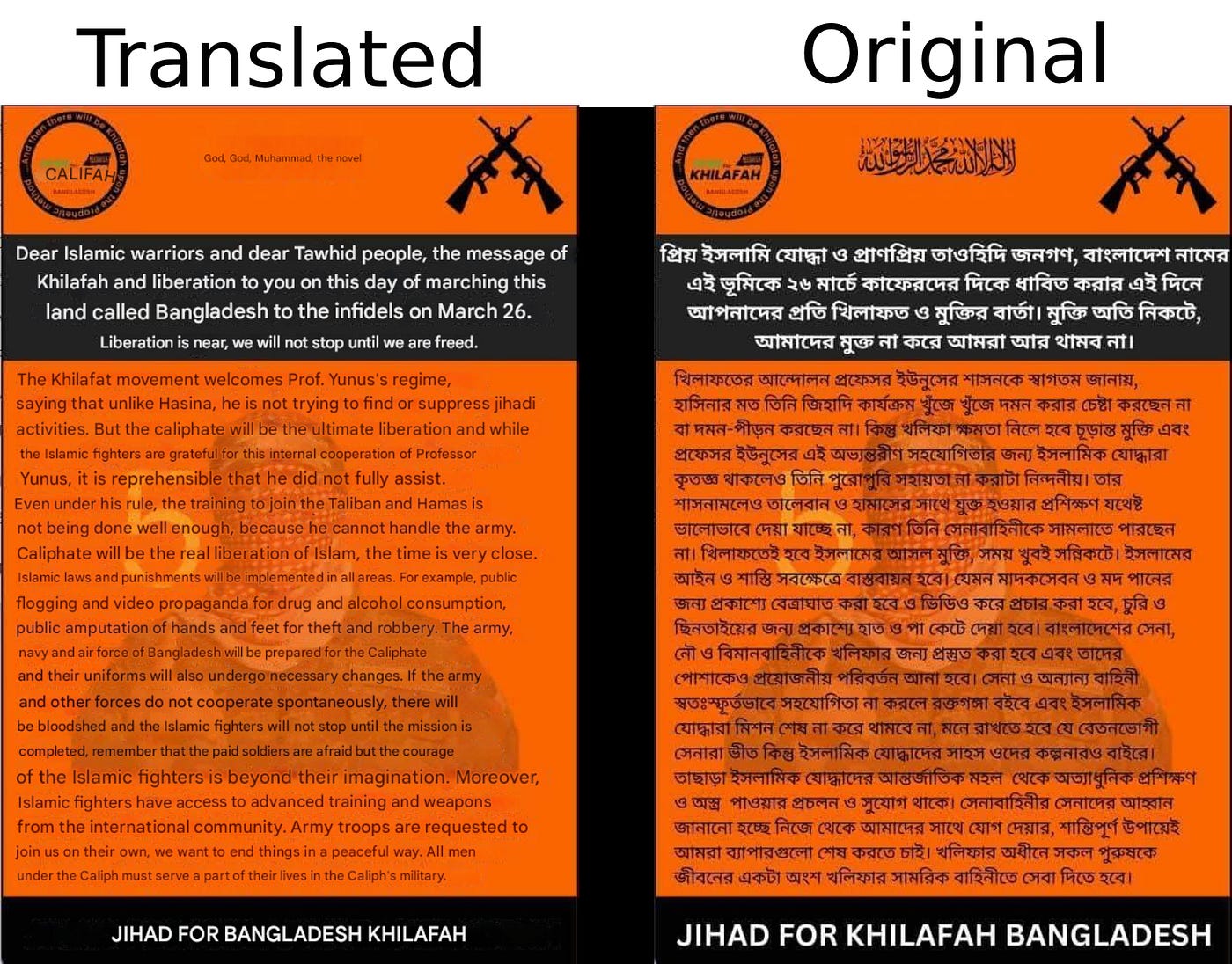
Defenders of the regime often attempt damage control by pointing to the group’s supposed international criticism of Yunus and the West. But this argument only reveals how deeply embedded Hizb ut-Tahrir is in the broader international Islamist network, which frequently mimics this contradictory behavior.
Organizations like the Taliban and HTS are known for publicly opposing Western imperialism while simultaneously benefiting from its material or logistical support—whether through funding, tacit alliances, media narratives, or intelligence facilitation. Hizb ut-Tahrir’s posture is no different: opportunistic and strategically duplicitous.
When confronted with hard evidence—such as public posters which have openly circulated from Hizb ut-Tahrir-affiliated circles, not only declaring their support for Muhammad Yunus but explicitly thanking him for his backing, though not without expressing disappointment for expecting even greater assistance—apologists claim these are not “credible” proofs of collaboration. But this excuse crumbles when contrasted with the regime’s own actions. Convicted terrorists with inter-organizational links have been released, some even after prison breaks that occurred in suspicious and coordinated circumstances. This isn’t accidental negligence — it’s systemic complicity.
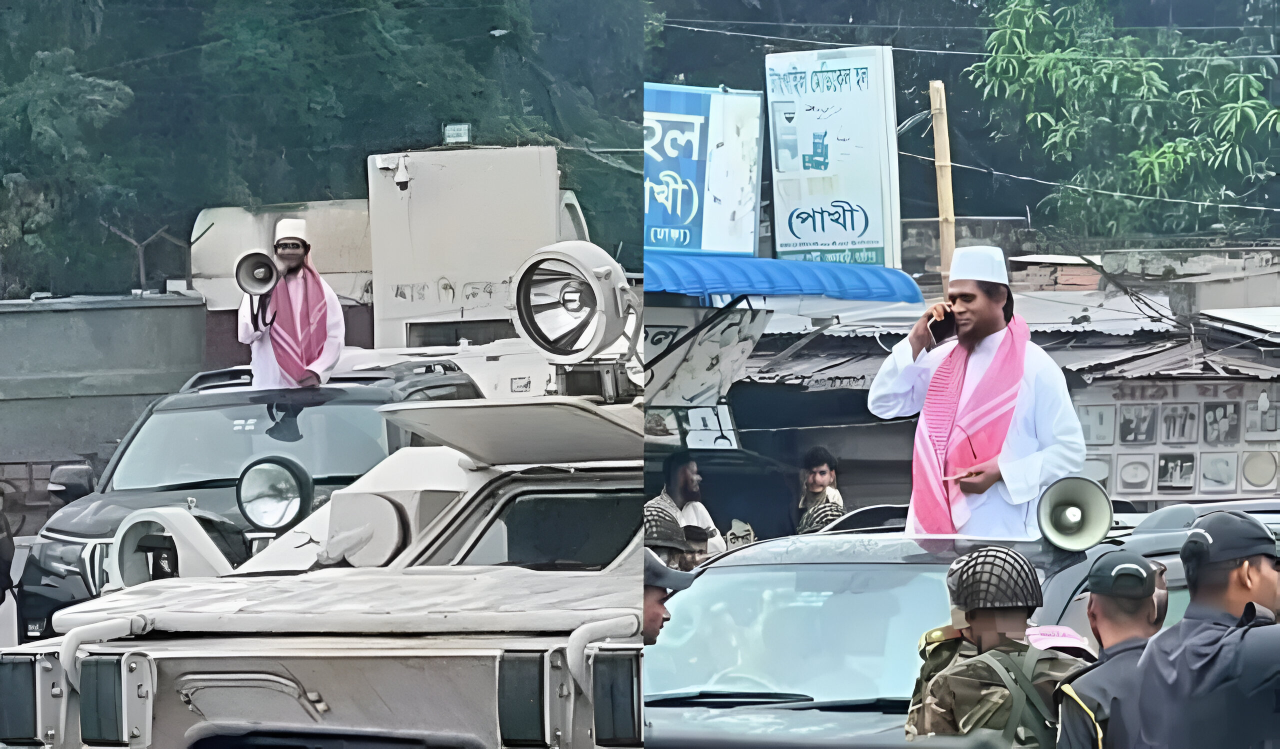
And what of the so-called “crackdowns”? The narrative that the government is taking decisive action against extremist groups is deeply contradicted by recent events. In March 2025, Hizb ut-Tahrir—a banned organization recognized as a terrorist entity—publicly mobilized via social media, then proceeded to hold street manifestations with reported participation numbering up to 5,000. Footage from the event shows police officers not intervening but casually walking among the demonstrators, in some cases even seen speaking to them in a disturbingly relaxed manner.
Regime supporters were quick to claim that 36 members were arrested during this protest, presenting it as evidence of decisive action. But when compared to the total number of participants, this is a laughable figure. Arresting 36 out of 5,000 members of a banned terrorist organization—while thousands of activists from the former ruling party face mass arrests for political reasons—hardly qualifies as a crackdown. It is token enforcement at best, designed more for appearance than for genuine counterterrorism.
While extremist organizations like Hizb ut-Tahrir continue their open campaigns for the establishment of a Caliphate and the imposition of militant theological dogma on minorities, progressive Muslims, and secular voices, the current regime’s narrative operates in lockstep—serving not to counter this wave, but often to obscure, justify or even indirectly legitimize it. The government and its allies frequently attempt to reframe religiously motivated violence as mere “political unrest,” or deny the religious dimension altogether, often without offering any evidence to support such claims. This calculated ambiguity is not accidental—it is designed to divert attention from the Islamist alliances embedded within the regime’s support structure.
Media outfits aligned with the regime, such as Netra News, have played a central role in this whitewashing. Netra News, a prominent propaganda outlet that openly supported the regime change from its early stages, received funding from the National Endowment for Democracy (NED)—a U.S government-funded organization notorious for facilitating soft-power operations under the guise of democracy promotion.
Unsurprisingly, Netra News has repeatedly attempted to downplay the threat posed by Hizb ut-Tahrir, presenting them as somehow “less radical” than al-Qaeda. They even go so far as to claim that Hizb ut-Tahrir’s continued existence in the UK is proof that the organization does not represent a serious terrorist threat.
This line of argument is not only disingenuous, but historically blind—after all, the same UK allowed the open promotion of Osama bin Laden in its mosques and public squares during the 1990s, a fact confirmed by The Independent and other British outlets. UK intelligence and NGOs have also been complicit in facilitating Syrian jihadist factions affiliated with al-Qaeda, under the illusion of backing “moderate opposition.”
While minorities face the brunt of increased hate crimes, vandalism of temples, forced conversions, and systematic intimidation, the government remains preoccupied not with providing protection or accountability, but with manufacturing political legitimacy.
State-aligned media and think tanks flood the public sphere with distraction campaigns—promoting the supposed democratic “rebirth” of Bangladesh and portraying the regime change as a popular movement, despite the deep involvement of foreign intelligence agencies, financial manipulation, and ideological engineering.
The involvement of the pro-regime-change, U.S.-funded outlet Netra News in manufacturing consent for the regime change in Bangladesh should come as no surprise. Its function mirrors that of other propaganda instruments bankrolled by U.S. imperialism—most notably Benar News, an affiliate of Radio Free Asia (the Asian equivalent to Radio Free Europe/Liberty), itself a relic of Cold War psy-ops created to spread anti-Communist propaganda and engineer regime changes across the Global South.
These outlets, masked under the language of “freedom” and “democracy,” have consistently operated as information warfare tools for destabilizing governments that fall outside of Washington’s strategic line.
This pattern of interference becomes even clearer when we examine the figure of Muhammad Yunus—not just a so-called “microfinance pioneer,” but a long-time fundraiser and affiliate of the Clinton Foundation, a nexus of neo-liberal soft power that receives financial backing from Israeli lobbying networks and whitewashes their actions under the pretense of development. Yunus’s glorification as a “democracy advocate” by the NED designed to advance U.S. geopolitical goals—is not coincidental. In fact, his relationship with these imperialist entities is not only sustained but reciprocal. Yunus, in turn, amplifies their narratives, promotes their global agenda, and ensures their favored actors hold ground in Bangladesh’s political architecture.
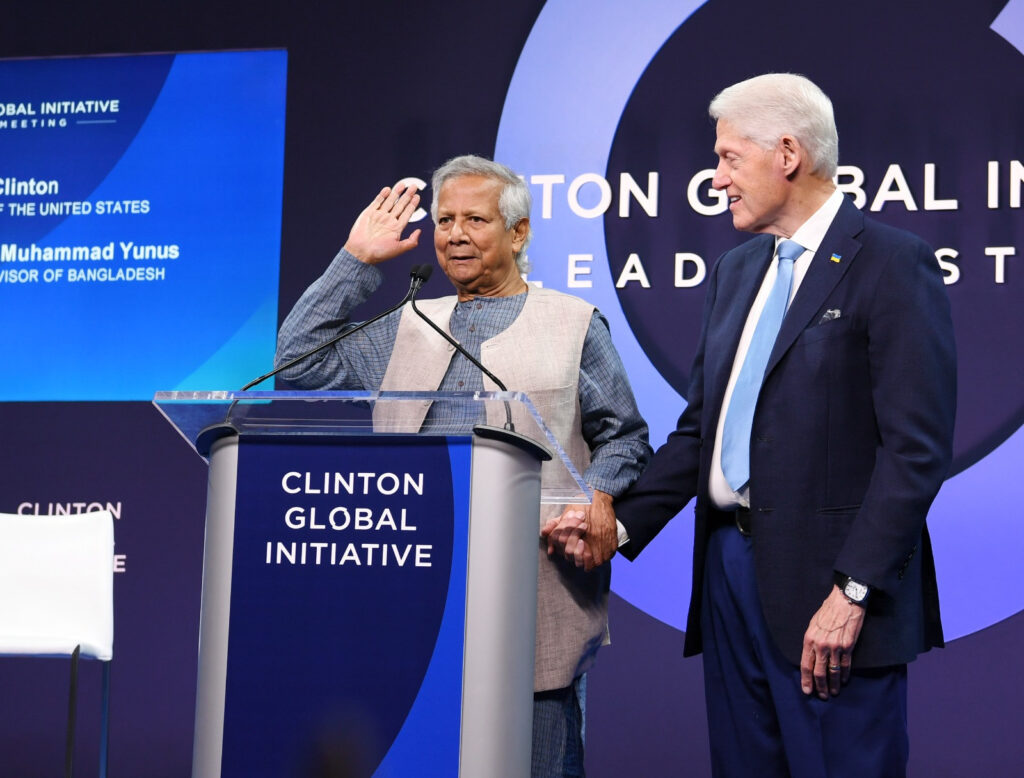
A major part of this operation is the co-opting of student leaders and the creation of new political entities designed to serve as the controlled opposition. One such example is the National Citizens Party, composed of many individuals who led the student rights protests—many of whom were previously backed by Western NGOs and labeled “human rights defenders.” These figures were elevated in international media precisely to serve as transitional figures in the regime shift.
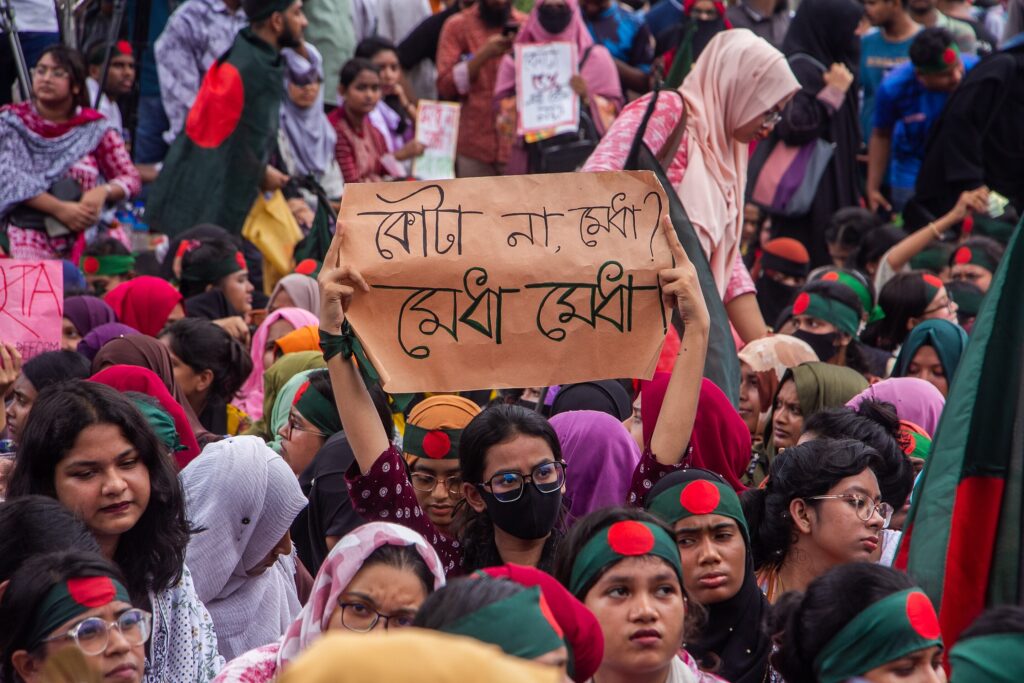
Another organization, the Peoples’ Rights Council, was founded by Nurul Haque Nur, the former face of the student movement, who has been embroiled in controversy after reports of his multiple meetings with Mossad agents surfaced, in Qatar, Dubai and India—according to Palestinian intelligence sources and confirmed by the Palestinian ambassador in Dhaka himself.
Nurul Haque Nur’s ties to Western human rights organizations and foreign governments are seen. His collaboration has persisted, extending into active ties with the current leadership responsible for the recent regime change. But what is more alarming is the presence of radical Islamist operatives within these same circles.
Tarek Rahman, a senior figure in Nur’s new political outfit, is directly affiliated with Hizb ut-Tahrir—the very organization now pushing openly for Caliphate rule, jihadist violence, and the dismantling of Bangladesh’s secular order. His involvement highlights how deeply these networks have penetrated the post-regime change political environment, cloaking their extremist agendas behind the façade of rights-based activism.
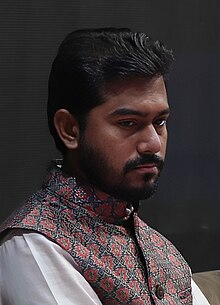
The existence of such extremist forces under the former government
Now the question emerges—is all of this truly new? Is the rise of radicalism, the institutional failures, and the dangerous convergence of Islamist forces with political actors solely a product of the recent regime change? The answer is no.
This crisis did not materialize overnight; its roots lie in the deep contradictions and failures of the former government under Prime Minister Sheikh Hasina who, despite coming to power under the banner of progressivism, presided over the very environment that allowed many of these extremist factions to incubate and grow.
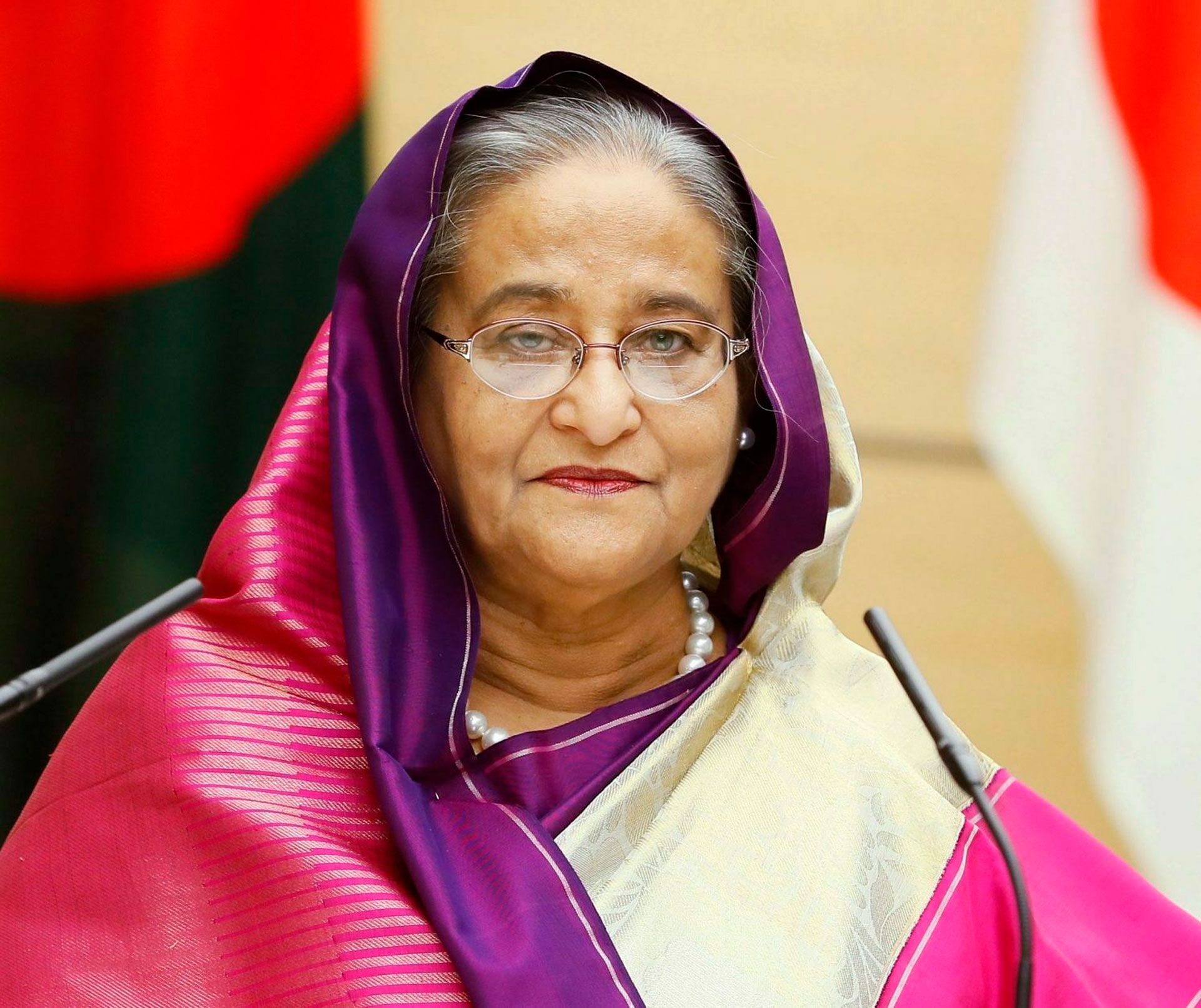
Take, for example, the attempted military coup against her administration in 2011, orchestrated by none other than an officer linked to Hizb ut-Tahrir. These elements were not acting in isolation—they shared ideological and operational connections with Ansarullah Bangla Team and al-Qaeda in the Indian Subcontinent (AQIS).
The government initially responded with a crackdown, and the attempt was thwarted, but what followed exposed a deeper institutional rot. Despite being arrested in 2014 with direct ties to al-Nusra Front and AQIS, Asif Adnan, the now de facto leader of Hizb ut-Tahrir in Bangladesh, was granted bail under Hasina’s government—a grave judicial failure that not only let him walk free, but enabled his escape abroad, where he continued his work undisturbed until returning under the new regime.

Furthermore, the rot was not confined to isolated cases. In 2013, when progressive and secular forces mobilized en masse in support of the Shahbagh Movement, calling for the execution of convicted war criminals from Jamaat-e-Islami—the Islamist party that had opposed Bangladesh’s independence—another force emerged to counter this momentum: Hefazat-e-Islam. This organization, cloaked in madrasa networks and claiming to be apolitical, stormed into public life with a 13-point charter that embodied every hallmark of a theocratic state—from blasphemy laws to the suppression of women’s rights.
Despite Hefazat’s aggressive, anti-democratic posture—and its blatant disregard for public order, which led to mass unrest and bloodshed—Sheikh Hasina’s administration chose political expediency over principle. In an effort to defuse tensions and co-opt the group’s support base, her government capitulated to several of Hefazat’s demands.
This decision did not just show weakness; it institutionalized Islamist influence within state structures. In return, she was cynically crowned “Qaumi Janani” (Mother of the Nation), a title bestowed by the very movement that had sought to dismantle Bangladesh’s secular character.
Figures such as Abu Taw Ha Al Adnan and Dr. Enayet Ullah Abbasi stand out as key examples—both prominent associates of Hizb ut-Tahrir who simultaneously held influential positions within Hefazat-e-Islam during the tenure of the former government.
These very actors—who once orchestrated demands for theocratic state policies under Sheikh Hasina’s government in 2013—continue today to pressure the current Yunus regime to accept those demands and, in addition, release even more convicted extremists from prison.
Their rhetoric is far from passive: They have openly threatened armed rebellion if their demands are not fulfilled, echoing the same threats they issued a decade ago and they have gone so far as to issue direct threats of civilian killings should the state fail to adopt their demanded legal impositions, using the threat of violence as leverage to enforce theocratic dictates through fear and coercion.
But this was not just about Hefazat. Under Hasina’s rule, Hizb ut-Tahrir-affiliated figures found space in academic institutions, particularly universities. Some of these faculty members provided aid for extremists—including those involved in the 2016 Holey Artisan Bakery attack, one of the deadliest terrorist incidents in the country’s recent history.
Rather than acting decisively, the government allowed this quiet infiltration to fester. Even Chhatra League, the student wing of Hasina’s Awami League, was not immune.
The organization—once a pillar of progressive politics—became compromised, as elements with Islamist sympathies took root, many of whom would later play key roles in the regime change that overthrew Hasina herself.
Thus, what we see today is not a sudden eruption but the culmination of years of bourgeois compromise, state-sanctioned appeasement, and willful blindness.
The political opportunism that has characterized Bangladesh’s elite politics continues to mutate and adapt. Take Hefazat-e-Islam—the same group that once branded itself as apolitical and religiously driven, which previously aligned with Sheikh Hasina’s regime for strategic gains.
Now, in a new configuration of reactionary politics, Hefazat has entered into an agreement with the BNP, a party with a long-standing record of enabling Islamist forces, most notably through its deep ties to Jamaat-e-Islami and enabling the penetration of extremist elements into government and military apparatuses.

Paving the way for reactionary forces to embed themselves deep into the state structure under the guise of political ally or in some cases opposition. This shift is not ideological but tactical—a clear symptom of a political class willing to ally with extremists for electoral and street-level leverage.
Extremists affiliated with Hefazat-e-Islam have also been actively involved in violent provocations, including attacks, vandalism, and even theft under the pretext of pro-Palestinian solidarity protests—tactics deployed with impunity under the current regime’s passive oversight.
Parallel to these street-level alliances, the digital front of Islamist extremism in Bangladesh has evolved into a dangerously sophisticated ecosystem.
YouTube, Facebook, and other social media platforms now serve as their primary vehicles of outreach, indoctrination, and mobilization. While these channels and pages existed under the former government, they operated mostly in isolation and with some degree of caution.
That has changed dramatically. Since the regime change, these networks have publicly collaborated, cross-promoted one another’s content, and organized synchronized ideological campaigns—with virtually no state-imposed restrictions.
These media cells are not amateur or sporadic—they are systematically coordinated. Their social media presences such as SEAN publication, insaf24, llmhouse publication, Youth foundation talora, Youth Intifada Muhammadpur, etc.—produce high-quality contents pushing revisionist history, political propaganda, sectarian narratives, and theological justifications for violence. On Facebook, they spread viral hate content, amplify reactionary slogans, and coordinate mass-reporting campaigns aimed at de-platforming secular or progressive voices.
These groups exploit the algorithmic vulnerabilities of platforms to silence opposition—particularly targeting bloggers, activists, and critics of religious fundamentalism.
One of their most sinister digital weapons is the propagation of hateful conspiracy theories. A notable example is the so-called “Save Our Sisters” campaign, which parrots the “Bhagwa Love Trap” narrative developed following another toxic Islamophobic conspiracy popularized by India’s far-right RSS and BJP circles.
In a perverse twist, these Bangladeshi Islamist outfits invert the same theory to target Hindu minorities, accusing them of plotting to seduce and convert Muslim women.
What is more alarming is that this movement has clear links to Hizb ut-Tahrir-affiliated operatives, exposing the transnational and ideologically hybrid nature of this digital jihadist propaganda.
Distinct from the previously discussed extremist networks, a number of independent propagandists have emerged who, while not directly embedded within those organizational structures, nonetheless engage in incitement—particularly through public endorsement of vandalism—and exhibit clear ideological sympathy toward fundamentalist groups such as Jamaat-e-Islami, amplifying their narratives through separate yet parallel media efforts.
This digital offensive is not just about ideas; it is a coordinated political project aimed at reshaping the social fabric, silencing dissent, and mainstreaming reactionary politics under the guise of religious morality. The state’s inaction—or in many cases, quiet complicity—has allowed these groups to operate unchecked, while progressive voices are harassed, silenced or criminalized.
Transnational connections of extremist movements in Bangladesh
The question now, as we sharpen our focus, and shift from description to exposure, is: What must both the international and Bangladeshi communities urgently recognize about the current threat matrix?
First and foremost, it is crucial to understand that the Islamist networks entrenched in Bangladesh are neither isolated nor locally confined—they are deeply enmeshed in an international web of extremist actors, many of whom operate with impunity under the protection, funding or facilitation of Western states. These relationships are not incidental; they are reciprocal and strategically calibrated to undermine secular governance, destabilize the Global South, and expand the ideological reach of reactionary forces.
As previously exposed, the de facto leader of Hizb ut-Tahrir Bangladesh, Asif Adnan, had established direct operational links with al-Nusra Front (the Syrian branch of al-Qaeda, later rebranded as Hay’at Tahrir al-Sham/HTS) and al-Qaeda in the Indian Subcontinent (AQIS). These connections did not dissolve—they have deepened, with Hizb ut-Tahrir continuing to propagate open support for HTS’s government in Syria. HTS, despite being an offshoot of al-Qaeda, has received tacit facilitation and image sanitization from Western states, particularly the UK and U.S., under the guise of “moderate opposition” to the Syrian government.
In tandem, the Afghan Taliban regime—a known ally of Hizb ut-Tahrir —has consistently offered ideological and symbolic support to Islamist elements in Bangladesh. Prominent HT-affiliated organizers were amplified by Taliban propagandists, especially during and after the regime change, sending a clear message of transnational Islamist solidarity aimed at legitimizing Bangladesh’s own theocratic mobilizations.
The information war is central to this machinery. Groups such as 5Pillars, a UK-based Islamist media outlet, have played a key role in whitewashing Hizb ut-Tahrir’s agenda, defending its UK-based leadership, and normalizing the HTS regime in Syria. They function in close alignment with British foreign policy narratives that attempt to repackage terrorist groups as “anti-Assad forces” or “moderate resistance.”
One of 5Pillars’ leading voices, Dilly Hussain, is a textbook example of the extremist media-intelligence crossover. With bylines in Pakistan Today, Al Jazeera, Foreign Policy Journal, and other platforms, he has crafted a portfolio that legitimizes jihadist regimes through soft interviews and ideological appeasement.
His well-documented support for HTS, the Taliban, and similar regimes is not accidental—it is part of a deliberate strategy of mainstreaming radical theocratic politics under the guise of “bringing alternative perspectives.” His visits to Bangladesh, where he met with Asif Adnan, Jamaat-e-Islami leadership, and prominent regime-change student figures, only reinforce this ideological unification of transnational reactionary forces.

This is part of a pattern. These are not isolated networks—they are nodes in a global Islamist infrastructure, operating across national borders while sustaining a pipeline of personnel, funds, ideological material, and propaganda.
Even groups like Jamaat-e-Islami Bangladesh—well-known for its 1971 war crimes and Islamist agenda—remain tethered to Jamaat-e-Islami Pakistan, itself deeply embedded in that country’s militarized political landscape.
Its charitable arm, Al-Khidmat Foundation, has been accused of facilitating radical protests in the Rohingya camps in Bangladesh—a manipulation of a humanitarian crisis to bolster a political Islam agenda. It comes as little surprise that ARSA’S leader hails from Pakistan. Furthermore, it is also alleged that Bangladesh Islami Chhatra Shibir maintains close connections with Pakistani Intelligence (ISI).
The Muslim Brotherhood’s common alliance with both Jamaat factions demonstrates another key trend consolidating religious-fascist power in practice. Their ties to Western governments and NGOs are not new and other liberal imperialist instruments have historically cooperated or facilitated “democracy promotion” initiatives that ended up empowering Islamist groups under the camouflage of civil society.
See comprehensive data on Hizbut Tahrir and other radicals compiled by this author.
Conclusion
Bangladesh today faces an uncertain future—not only due to political shifts but because of the growing influence of radical elements seeking to reshape its social and ideological fabric. While changes in leadership and governance are part of any nation’s journey, the increasing visibility of extremist groups with transnational connections poses a serious threat to the country’s stability, pluralism, and hard-earned progress. Moving forward, the greatest challenge for Bangladesh will be to resist both external interference and internal radicalization—ensuring that its future is shaped by democratic values, not by forces of intolerance and division.

CovertAction Magazine is made possible by subscriptions, orders and donations from readers like you.
Blow the Whistle on U.S. Imperialism
Click the whistle and donate
When you donate to CovertAction Magazine, you are supporting investigative journalism. Your contributions go directly to supporting the development, production, editing, and dissemination of the Magazine.
CovertAction Magazine does not receive corporate or government sponsorship. Yet, we hold a steadfast commitment to providing compensation for writers, editorial and technical support. Your support helps facilitate this compensation as well as increase the caliber of this work.
Please make a donation by clicking on the donate logo above and enter the amount and your credit or debit card information.
CovertAction Institute, Inc. (CAI) is a 501(c)(3) non-profit organization and your gift is tax-deductible for federal income purposes. CAI’s tax-exempt ID number is 87-2461683.
We sincerely thank you for your support.
Disclaimer: The contents of this article are the sole responsibility of the author(s). CovertAction Institute, Inc. (CAI), including its Board of Directors (BD), Editorial Board (EB), Advisory Board (AB), staff, volunteers and its projects (including CovertAction Magazine) are not responsible for any inaccurate or incorrect statement in this article. This article also does not necessarily represent the views the BD, the EB, the AB, staff, volunteers, or any members of its projects.
Differing viewpoints: CAM publishes articles with differing viewpoints in an effort to nurture vibrant debate and thoughtful critical analysis. Feel free to comment on the articles in the comment section and/or send your letters to the Editors, which we will publish in the Letters column.
Copyrighted Material: This web site may contain copyrighted material the use of which has not always been specifically authorized by the copyright owner. As a not-for-profit charitable organization incorporated in the State of New York, we are making such material available in an effort to advance the understanding of humanity’s problems and hopefully to help find solutions for those problems. We believe this constitutes a ‘fair use’ of any such copyrighted material as provided for in section 107 of the US Copyright Law. You can read more about ‘fair use’ and US Copyright Law at the Legal Information Institute of Cornell Law School.
Republishing: CovertAction Magazine (CAM) grants permission to cross-post CAM articles on not-for-profit community internet sites as long as the source is acknowledged together with a hyperlink to the original CovertAction Magazine article. Also, kindly let us know at info@CovertActionMagazine.com. For publication of CAM articles in print or other forms including commercial internet sites, contact: info@CovertActionMagazine.com.
By using this site, you agree to these terms above.
About the Author

Omnisama is an independent watchdog, activist, investigative researcher, and socio-political analyst from Bangladesh.
Working anonymously for reasons of security and operational integrity, their work focuses on monitoring extremist networks and critically analyzing the undercurrents of power, ideology, mass manipulation and social control—exposing hidden forces shaping socio-political landscapes.As a leftist and realist thinker,
Omnisama combines investigative journalism with philosophical inquiry and psychological analysis—navigating the digital space as both an archivist and an activist. They also run “Order of Omnisama”—a decentralized community dedicated to uncensored dialogue, radical inquiry, and confronting reality without compromise.
Omnisama can be reached at notomnisama@protonmail.com.
Socials: https://linktr.ee/notomnisama


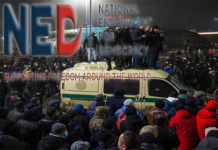

I’m really impressed along with your writing skills as well as with the structure for your blog. Is this a paid theme or did you modify it yourself? Anyway keep up the excellent quality writing, it’s uncommon to peer a nice weblog like this one these days..
Great article- but what a complete and utter mess. Its hard to wrap ones head around how these people think and why they want to create such destructive inhuman regimes.
Excellent article. The United States and the rest of the world has been largely silent and inactive concerning the plight of religious minorities in Bangladesh.
https://goachronicle.com/the-plight-of-religious-minorities-in-bangladesh-a-silent-human-rights-crisis/
Message From The Author : My overall response to any comment saying “bias/propaganda” : In order to prevent anyone from labeling it as ‘pro-Awami League’, necessary criticisms have been directed towards all sides — including the Awami League (BAL), BNP, and Jamaat.
Additionally, every claim made is backed with proper sources in case anyone attempts to deny or deflect from the facts. everyone is certainly welcome to try and debunk with proper data and pointers.
also as for myself :
1 – i was in support for the july mass uprising the whole time, i still am.
2 : i have also tried the other narrative of how this is not a color revolution, here is me attempting to debunk using this article “Debunking the ‘Color Revolution’ Myth: How Bangladesh’s 2024 Uprising Was a People’s Revolution, Not Another Arab Spring”link:
https://www.reddit.com/r/OmnirSocialzone/comments/1imolj6/debunking_the_color_revolution_myth_how/
Connected link : https://www.reddit.com/r/OmnirSocialzone/comments/1is6lrp/narratives_about_the_july_revolution_from_shibir/
but currently i think it was a mix of both spontaneity, strategic planning from students coordinators and shibir and well timed foreign interventions. even these two reddit articles contains proof and statements from the coordinators themselves (of their planning). also another fact, contrary to popular belief : color revolutions do happen “spontaneously”.